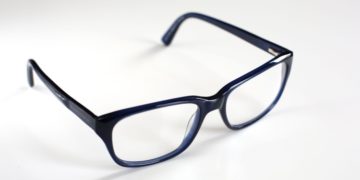Fine lines, volume loss, and sagging skin—fillers offer a fast, effective fix without going under the knife. Learn how dermal fillers effects target facial wrinkles, acne scars, and more with safe, clinical precision.
Fine lines don’t knock. They creep in slowly. Laugh lines deepen. Skin begins to sag. Subtle changes—but you notice.
Dermal fillers effects can soften that shift, restoring a smoother, fuller look in key facial areas.
Why Your Skin Loses Volume
Aging steals collagen. Fat pads shift. Skin cells regenerate slower. Facial contours fade. Wrinkles and deep folds step in.
Volume loss isn’t just about looks. It changes how skin reflects light. That tired, drawn appearance? It’s from structural support slipping away underneath.
What Dermal Fillers Actually Do
Injectable fillers restore lost volume. They smooth facial lines. Fill in deep wrinkles. Add definition.
HA fillers—made from hyaluronic acid—draw moisture into the treated area. Think of them as a gel-like cushion beneath the skin. That bounce-back glow? Often thanks to this major component of soft tissue fillers.
Other options include poly L lactic acid, calcium hydroxylapatite, and autologous fat. Each type of filler works differently. Some stimulate collagen production. Some simply lift.
Where Fillers Are Typically Used
Common areas for dermal filler treatment include smile lines, cheeks, lips, jawline, and under the eyes.
Every facial filler has a purpose. Thicker ones handle deep wrinkles and body contouring. Softer options suit finer facial lines or lip volume.
An experienced dermatologist chooses the best injectable fillers based on skin condition, facial structure, and desired result.
What Happens During the Dermal Filler Procedure
First, the doctor reviews your medical history. Allergic reactions or past adverse events? They’ll ask.
A numbing agent often gets applied before injections. Some fillers even contain lidocaine to ease discomfort during the session.
The provider marks injection sites. Filler injections are delivered just beneath the skin. Most treatments wrap in under an hour.
You’ll see immediate results in most cases. Minor swelling or redness at the injection site may follow, but it fades fast.
How Long Fillers Last
Dermal fillers effects vary depending on the filler used, the facial area treated, and how your body metabolizes the product.
Hyaluronic acid fillers often last 6–18 months. Others like poly L lactic acid build results gradually over weeks and may last longer.
Touch-ups help maintain a more youthful appearance over time.
What to Watch Out For
Most people tolerate fillers well. But filler injections aren’t risk-free.
Mild issues include bruising, swelling, or redness. In rare cases, inflammatory reaction, allergic reactions, or abscess formation may occur.
Vascular occlusion—when filler blocks a blood vessel—may lead to skin necrosis or visual disturbances. Tissue death is extremely rare, but it’s a serious complication that demands immediate medical attention.
FDA approved fillers reduce risk. Providers using off-label products raise the chance of adverse events.
Choosing a licensed injector with training in facial anatomy helps prevent major issues. Always report unusual symptoms quickly.
Who Shouldn’t Get Fillers
Some medical conditions, medications, or previous cosmetic procedures might rule you out. Fillers aren’t advised during pregnancy, or in severe cases of autoimmune disease.
People with active skin infections near the injection site should postpone treatment. Anyone with a history of facial surgery should disclose it before getting fillers.
Younger Age Groups and Preventative Fillers
More people in their twenties now seek cosmetic procedures. The goal? Prevention.
By treating early signs like fine lines or slight volume dips, younger adults aim to avoid deeper wrinkles later. Preventative filler treatment may delay visible aging—but it should be subtle.
Are Fillers Right for You?
Start with a consultation. A qualified provider evaluates your skin, listens to your concerns, and tailors a plan based on your face—not trends.
Filler treatments aren’t one-size-fits-all. Some people want volume. Others want subtle tweaks. The best results come from working with someone who understands facial balance and knows when to stop.
Key Takeaways
Dermal fillers effects go beyond plumping lips or softening smile lines. They reshape contours, support sagging skin, and restore fullness lost over time.
Choose the right type of filler. Stick with FDA approved products. Always work with a provider trained in cosmetic treatment and facial structure.
And if something doesn’t feel right afterward? Don’t wait. Immediate medical attention can prevent rare but serious complications.
With careful planning and skilled application, injectable fillers can deliver natural results that leave skin looking smoother, brighter, and more rested.
Fine-tuning facial shape doesn’t always mean surgery. For many, dermal fillers effects deliver a visible boost—without the downtime.
Frequently Asked Questions
Can I inject dermal fillers at home?
No, always seek a trained professional—injecting fillers at home risks serious complications.
Where can I buy dermal fillers safely?
Only buy dermal fillers through licensed providers or certified clinics to avoid counterfeit products.
Do fillers help with facial wrinkles?
Yes, they fill and smooth out facial wrinkles for a more rested appearance.
Can fillers treat acne scars?
Yes, certain types of filler can lift and reduce the appearance of acne scars effectively.
David Prior
David Prior is the editor of Today News, responsible for the overall editorial strategy. He is an NCTJ-qualified journalist with over 20 years’ experience, and is also editor of the award-winning hyperlocal news title Altrincham Today. His LinkedIn profile is here.













































































